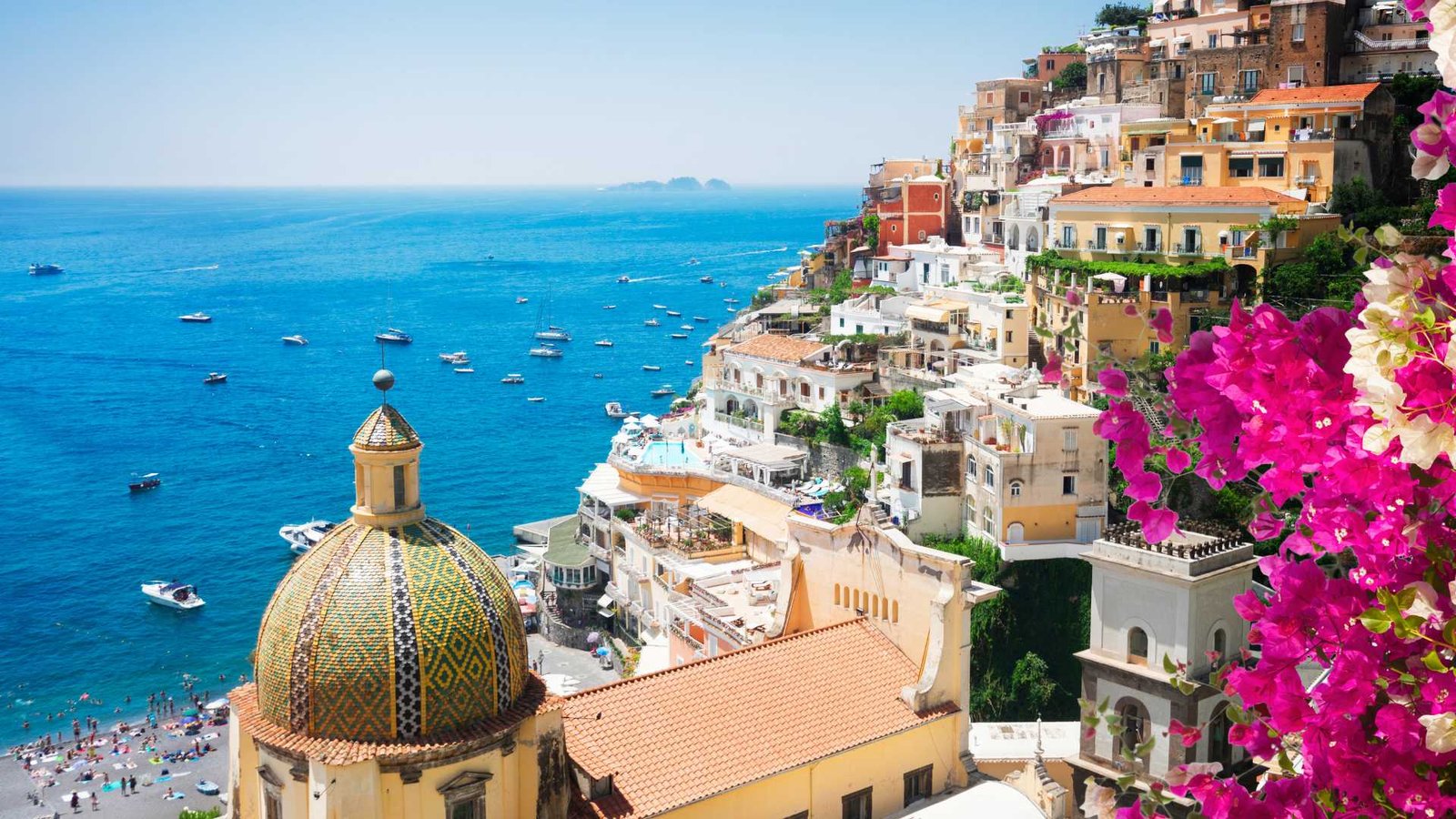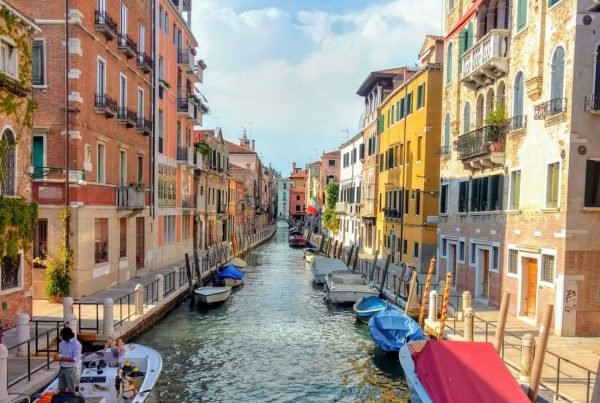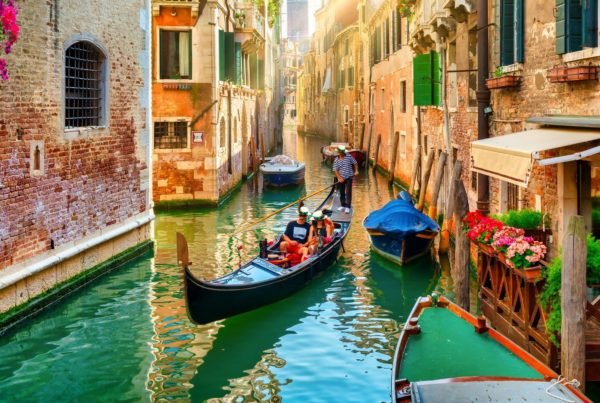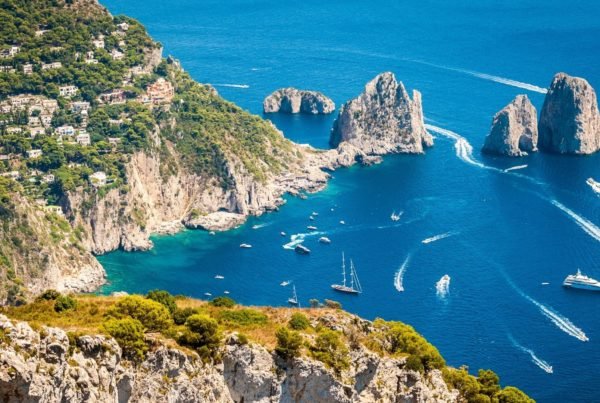Italy is a country that almost everyone wants to go to. It is a country that is seen in movies so often, that it comes up in almost every vacation destination. There’s so much beauty in this country, whether it is art, architecture, food or nature.
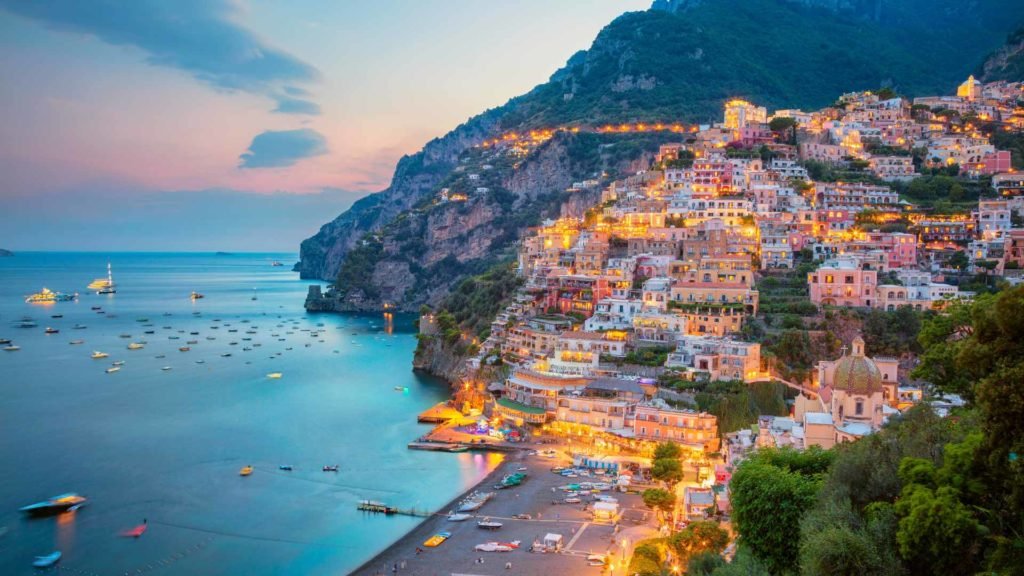
Planning a trip to Italy might get a little overwhelming because there is just so much to see here. To make things a little simpler, I’ve curated this 12-day Italy itinerary, and I hope it’ll make you are planning a bit more smooth sailing.
When you plan a trip, you also need to make sure you’re checking out the best times to visit your destination. Here is information about the best time to visit Italy.
Day 1- Arriving in Milan and Exploring It
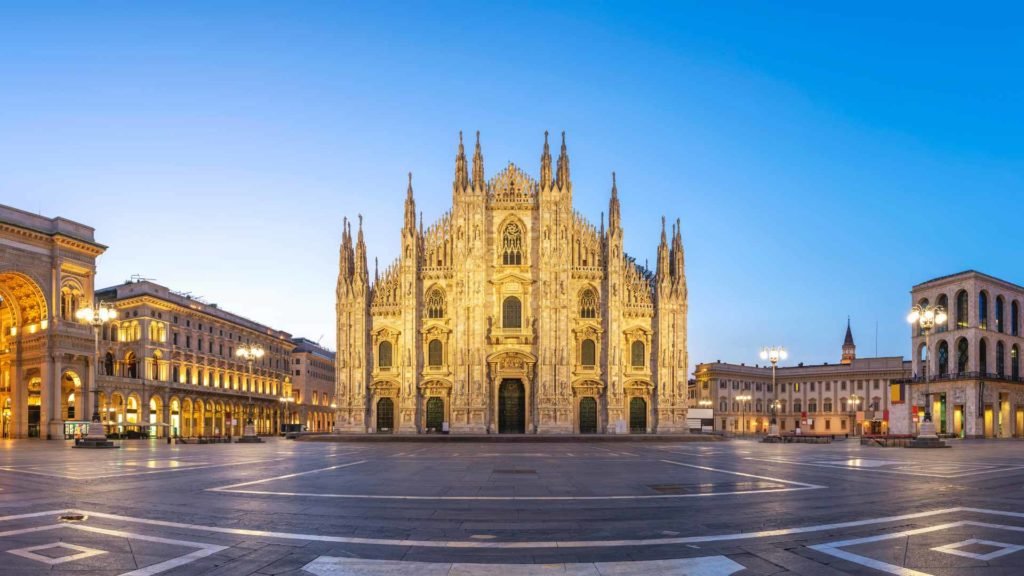
Milan is known as one of the fashion capitals of the world, and understandably so. However, in addition to the immaculate fashion, the city of Milan is also known for its architectural beauty.
The Duomo Di Milano
The construction of this Cathedral perhaps began around 1386, so it has been here for a long time. Located in the Piazza del Duomo, this is one of the most popular attractions in Milan. Through the centuries, Duomo Di Milano has gone through several designs and architectural changes in the hands of some of the most talented people Italy has seen.

The view of Milan city from the rooftop of this cathedral is truly breathtaking. When you’re in Milan, the Duomo Di Milano is a must-see. It is a testament to the architectural wonder and historical journey Italy has had.
Sforzesco Castle
The Sforzesco Castle, locally known as the Castello Sforzesco was built by Francesco Sforza in the 15th century. It is home to one of the finest art collections in Italy. With museums like the museum of antique art and the museum of musical instruments, there is so much to see and do here.
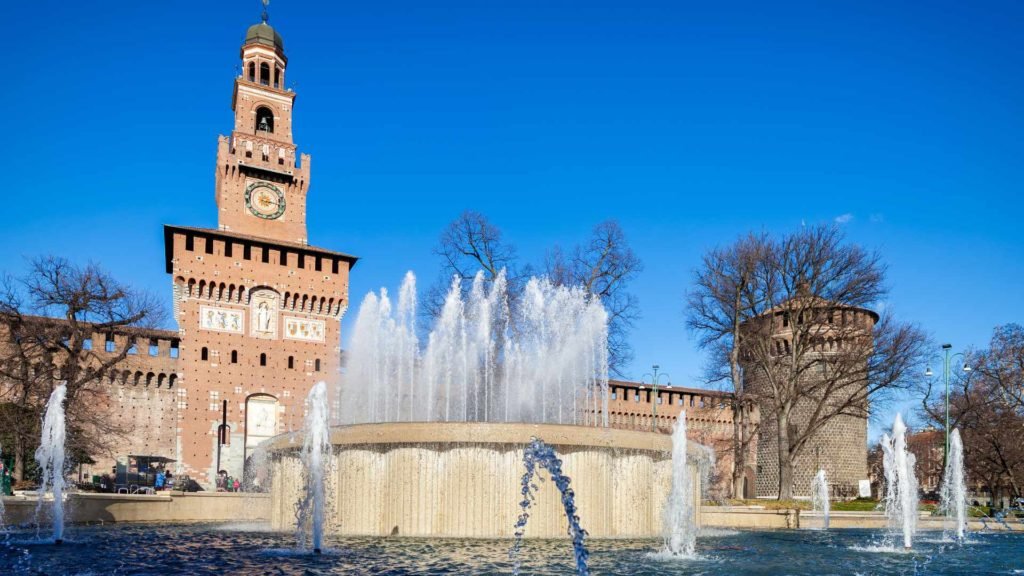
Michelangelo’s last, unfinished work is one of the biggest attractions here. The castle also holds art from some of the most popular Renaissance artists.
Galleria Vittorio Emanuele II
While you’re at the Piazza del Duomo, there is so much to see, in addition to the Duomo Di Milano itself. The Galleria Vittorio Emanuele II is adorned with high ceilings, coloured floors and huge, intricate mosaics.
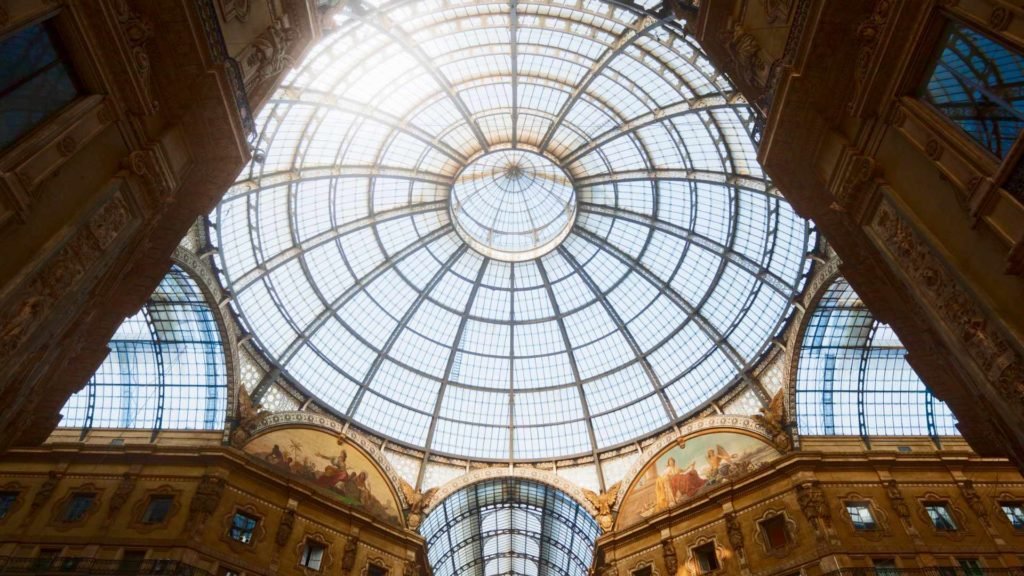
According to a local legend, if one wants to be lucky, one will have to step with their right foot on the popular bull structure and take a 360° turn with their eyes closed.
Day 2- Continue to explore Milan
Shopping in Milan
What better place is there to go shopping, than the world’s fashion capital? Shopping in Milan is an experience to remember. If you’re one for the designer and high-end brands, walk through Via Monte Napoleone street.
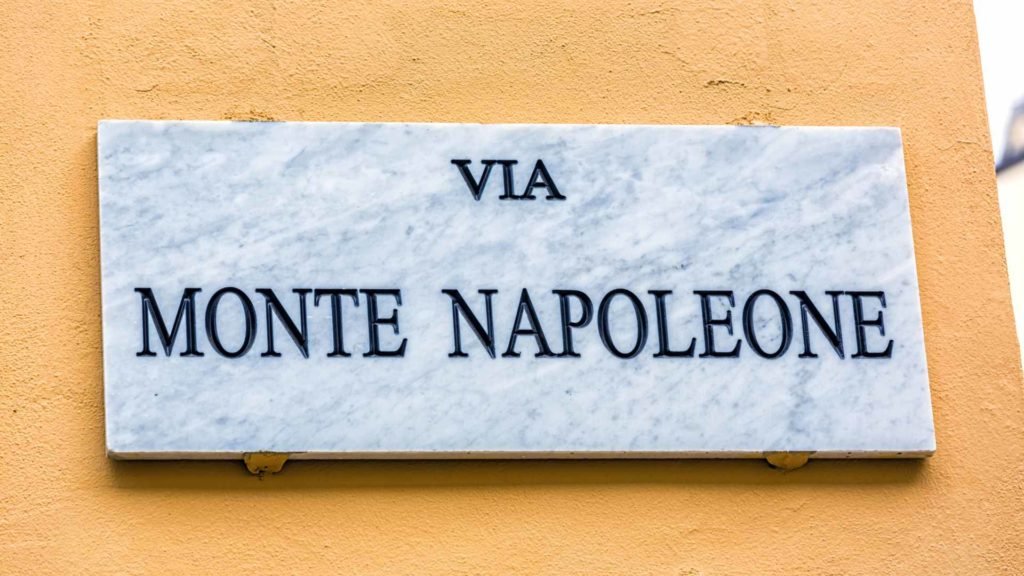
With brands like Gucci and Armani, this street is considered to be one of the most luxurious shopping streets in the world. Another great place for designer and high-end boutiques is Via Della Spiga.
Let’s talk about some of the other shopping options in Milan. Cavalli E Nastri is one of the most authentic vintage stores in Milan, Via Torino is a great place to get that local street shopping experience and Corso Vittorio Emanuele II is a vehicle-free street with gelato places, cafes and many, many fashion stops.
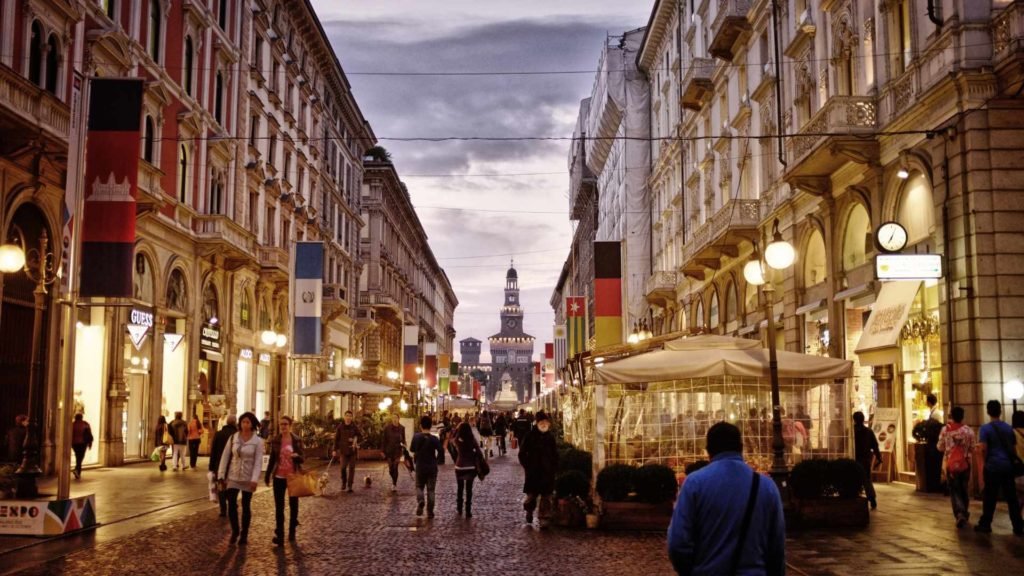
Whatever way you like to shop, Milan has something for you.
An evening at Naviglio Grande
The Naviglio Grande is a fun place to spend an evening at. This place is known to showcase the work of newer and younger artists. With several cafes and restaurants along the streets, you’ll definitely find something you love.
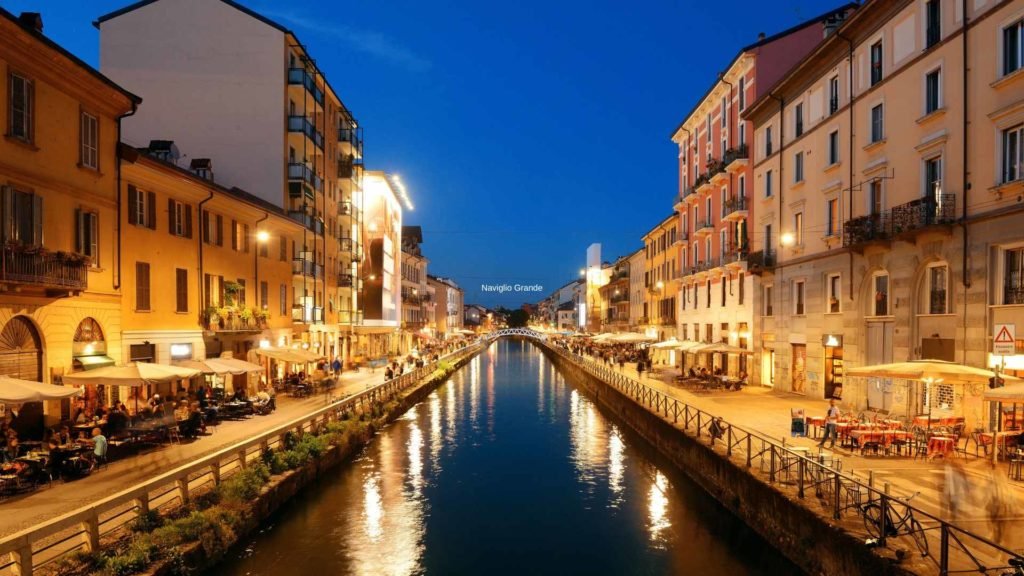
Shops and boutiques can also be found here, for some retail therapy. The Naviglio Grande is also known for its vibrant and happening nightlife.
Watch a show at the Teatro Alla Scalla
Teatro Alla Scalla translated to “The Theatre at the stairway” is one of the most poppa theatre and opera houses in all of Europe. Music, dance and other performing art programmes are a huge part of Teatro Alla Scalla’s objective to bring these performing arts to young and growing talents.
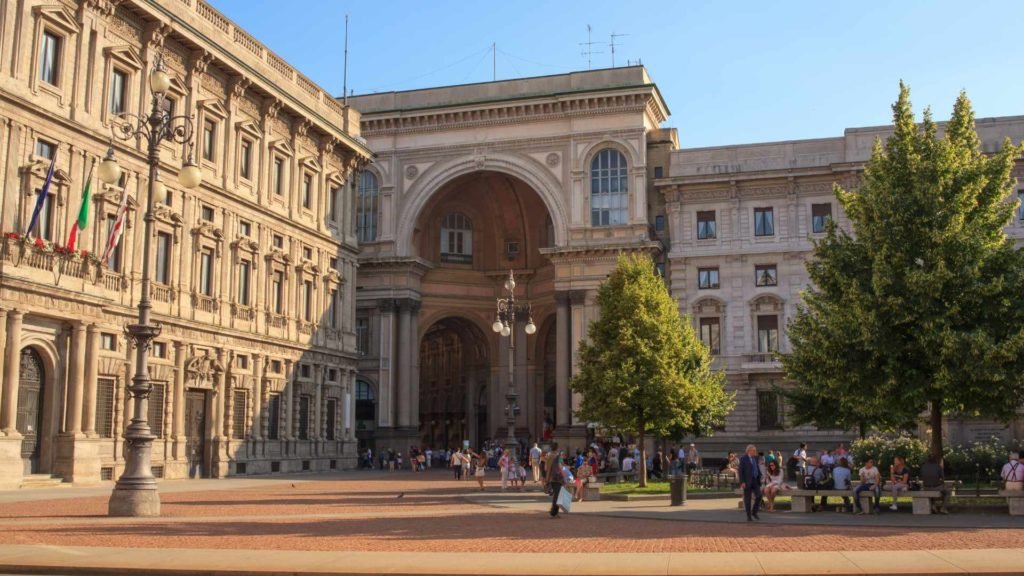
In addition to the performing house, the Teatro Alla Scalla has also got a huge collection of artworks, statues, huge paintings and costumes. If you’re in Milan, try to catch a show at the Teatro Alla Scalla. This place is a perfect combination of performing arts, art and history.
Day 3- Arriving at and exploring Venice
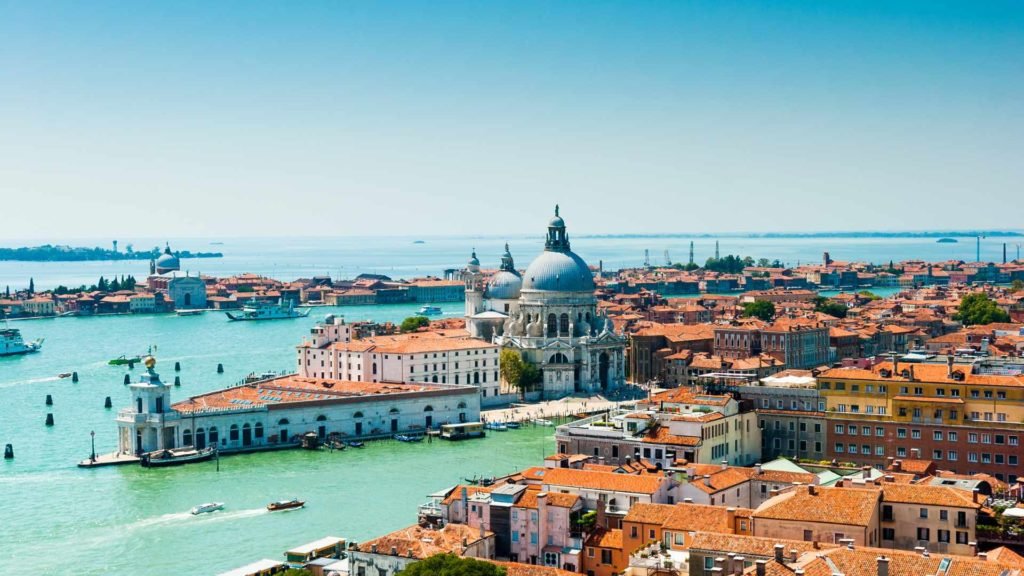
Venice is a city in northern Italy. It is basically made of 100 small islands, in a lagoon in the Adriatic Sea.
Milan to Venice
The distance between the two cities is about 244 kilometres. A train ride is the fastest way to travel from Milan to Venice. The journey is about 2 and a half hours, and if you leave early in the morning, you’ll be able to have a full day of exploring once you reach Venice.
Rialto Bridge or Ponte di Rialto
The Ponte di Rialto is the most popular bridge in Venice, and one of the best ways to look at the city. It is built over the Grand Canal and provides magnificent views of the city at all times of the day.
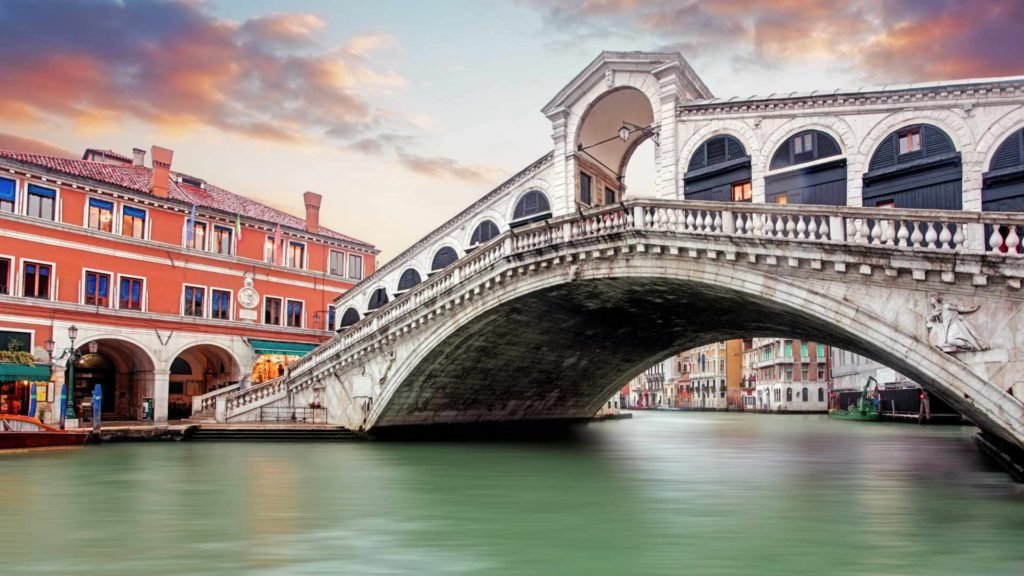
You can also people-watch, and watch the ferries and gondolas travel through the canal.
A Gondola ride through the Grand Canal
Speaking of Gondolas, one of the must-do things in Venice is to sit in a gondola and pass through the Grand Canal. This is one of the most romantic things to do here in Venice.
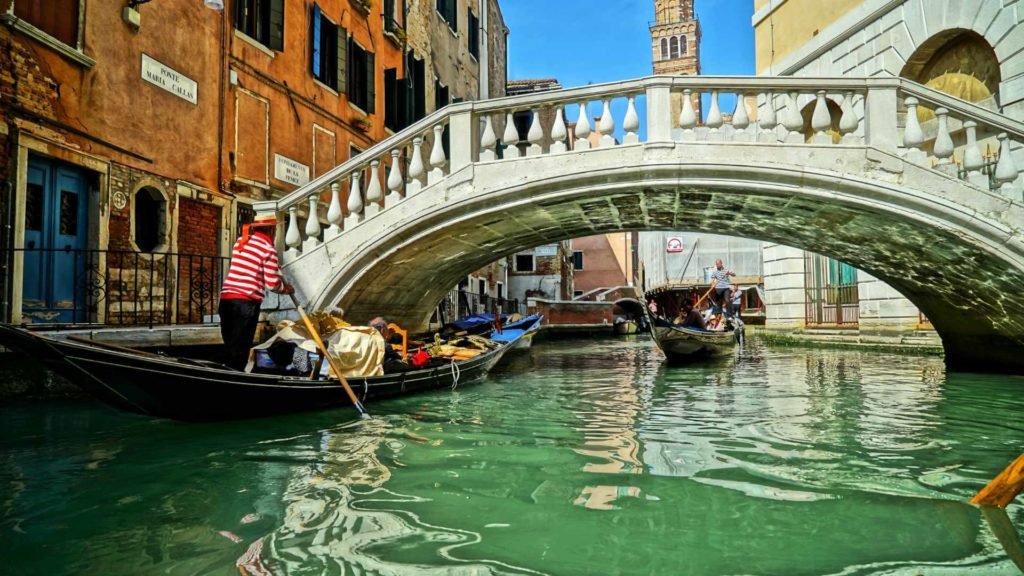
The image of a Gondola ride through the canals of Venice is a very famous sight in movies, and if when you’re in Venice, you should experience it too.
St. Mark’s Square
This is considered to be one of the finest squares in the world and is one of the most popular attractions in Venice. St Mark’s Square, locally known as the Piazza San Marco is a great place to see Venice through its architecture and history.
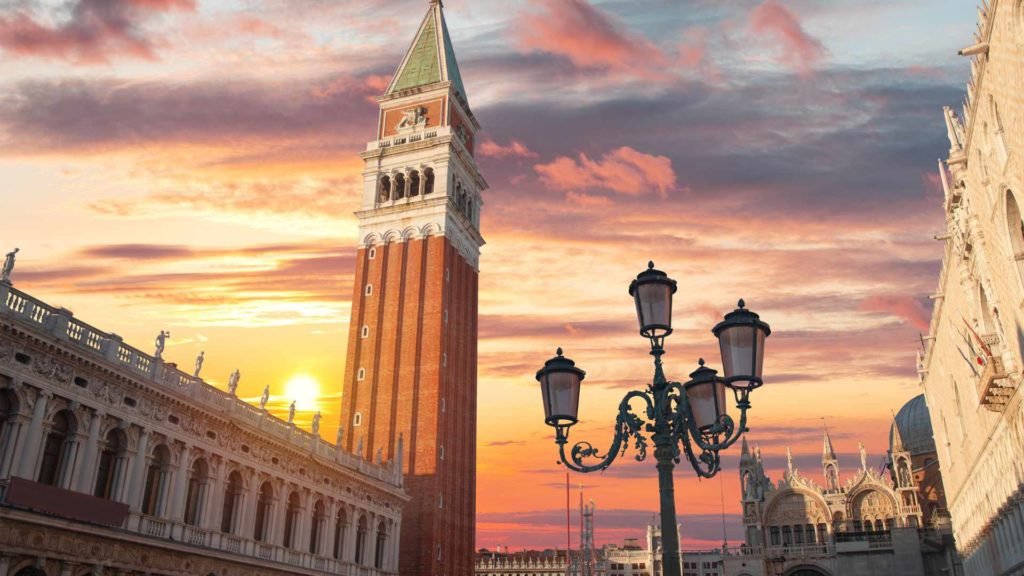
With buildings like St Mark’s Basilica and the Doge’s Palace, you’ll certainly be in awe. The St Mark’s Basilica is also called the golden church, due to the amount of treasure held here. The Doge’s Palace is a representation of Venetian Gothic architecture and today has been transformed into a museum.
Day 4- Continue to Explore Venice
The Campanile
Located at St Mark’s Square, this bell tower is one of the nicest ways to get a view of the city. You can get to the top of the tower by using an elevator, and the view at the top is stunning.

Aerial views of the city of Venice will leave you stunned.
The Beaches of Venice
Since the city is made up of a bunch of islands, there are so many beaches you’ll find here. The most popular beach is Lido beach, which is a great escape from city life. The Alberoni is a beach that is free to enter. It is located in a nature reserve, and the serenity at this beach will certainly help you relax.
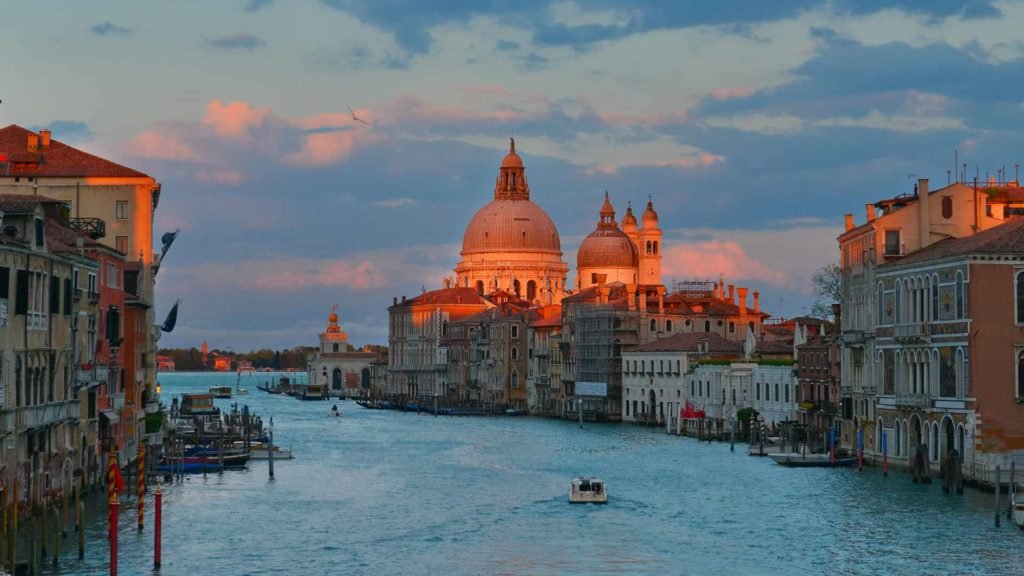
There are so many beaches in the city of Venice, with different environments on each one. Visiting a beach in Venice is one of those things you must do.
Museums of Venice
The art and architecture collections of Venice are in abundance, and this is seen through the several museums here. As I mentioned, the Doge’s Palace is a museum. It is an architectural wonder, with the courtyard, the ballroom and the overall interior and exterior reflecting the gothic character.
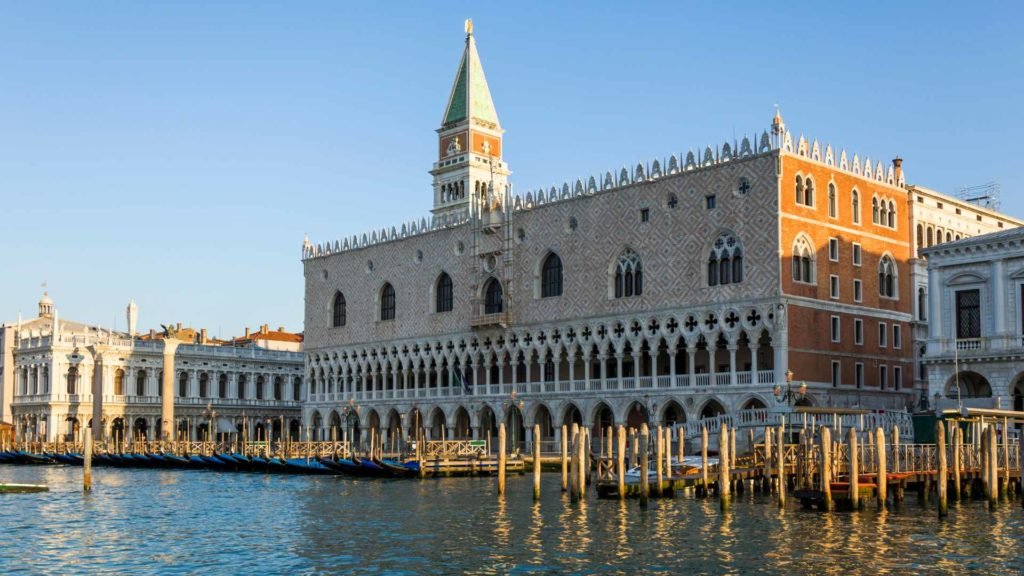
The Gallerie dell’Accademia is a renaissance museum, and you’ll literally feel like you’re walking through this important period of history. If you’re into modern art, the Palazzo Grassi and the Ca’Pesaro are great museums to check out. There are so many museums here in Venice, and you’ll definitely learn something new in whichever ones you visit.
Day 5- Getting to Florence and exploring it
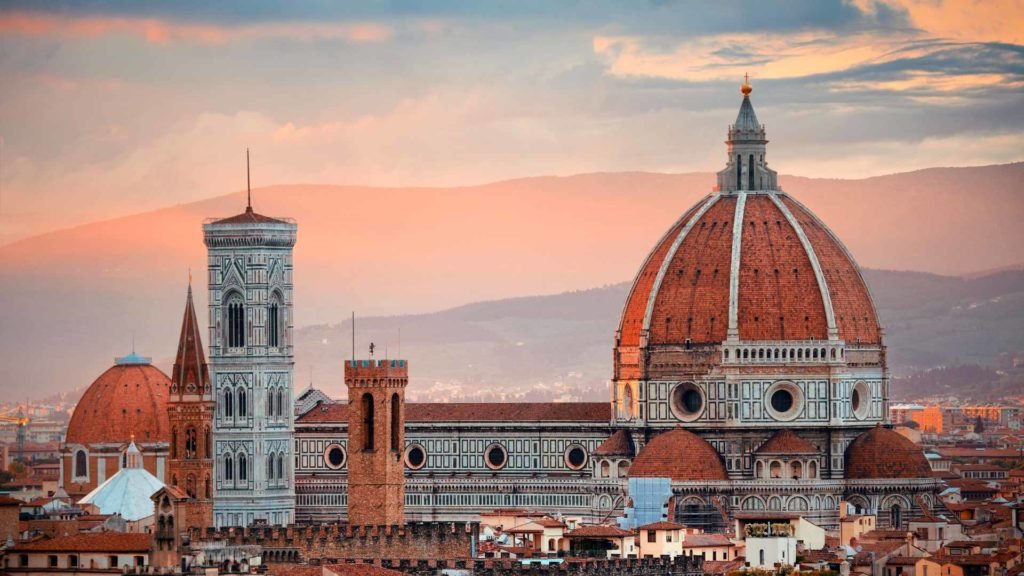
Florence is a city in the Central part of Italy, located in the Tuscany region. It is often called the centre of the Italian Renaissance. With museums, palaces and gardens, it is one of the most beautiful cities in Italy.
Venice to Florence
Just like most of Italy, the best way to travel from Venice to Florence is by train. The journey is about 269 kilometres, and if you take a high-speed train, you’ll each in two hours. Driving is another option, with the Padua and Bologna highways connecting the two places.
The Florence Cathedral
Locally known as the Cathedral of Santa Maria del Fiore, the Florence Cathedral is a wonderful reflection of the architecture here. It is the fourth largest church in the world, located at the Piazza del Duomo. The Florence Cathedral houses several monuments, including the Duomo (dome) and the Baptistery of San Giovanni.
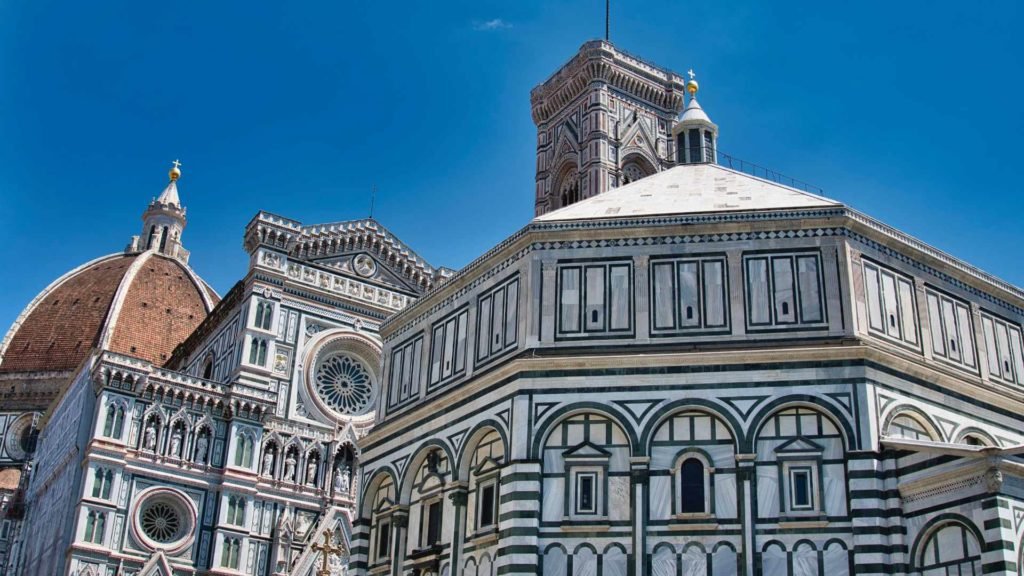
The Florence Cathedral also has museums, like Tribuna do Michelangelo, the Corrido del’ Opera and Galleria Della Cupola. Basically, there is a lot to do and see here. It is evident why the Cathedral of Santa Maria del Fiore is one of the most popular places in Florence.
Giotto’s Campanile
When you’re at the Florence Cathedral, walk a little and you’ll find Giotto’s bell tower, also located at the Piazza del Duomo. With around 450 steps, the climb to the top is a tough one.
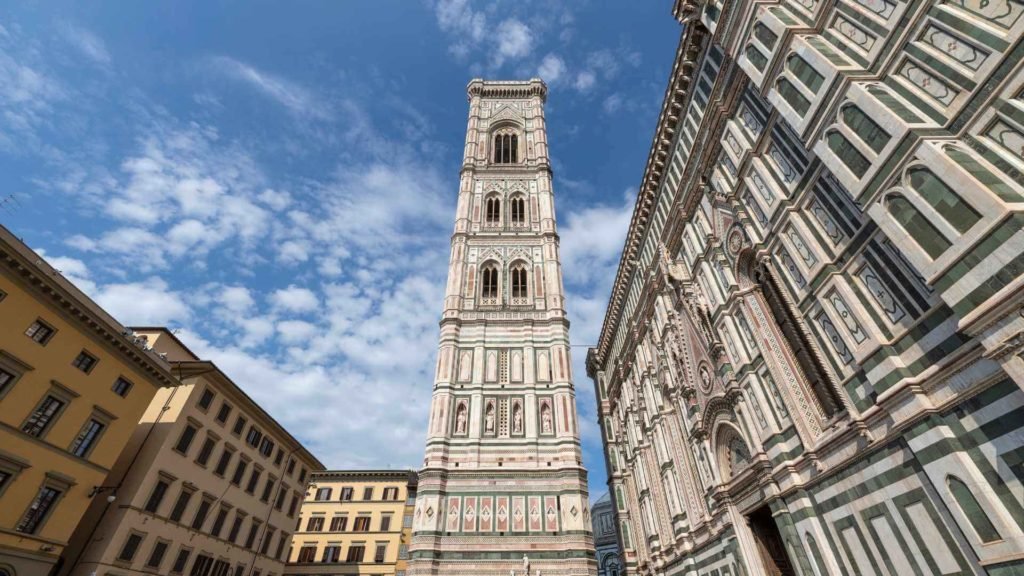
However, the view makes up for it. With red, white and green marble, it is one of the most beautiful buildings in Florence.
Uffizi Art Gallery
The Uffizi Art Gallery holds some of the finest pieces of art in Italy. It is basically a treasure chest for art from the Renaissance period. Sculptures, paintings and other pieces from artists like Michelangelo, Giorgio Vasari and Leonardo Da Vinci adorn the two floors of this museum.
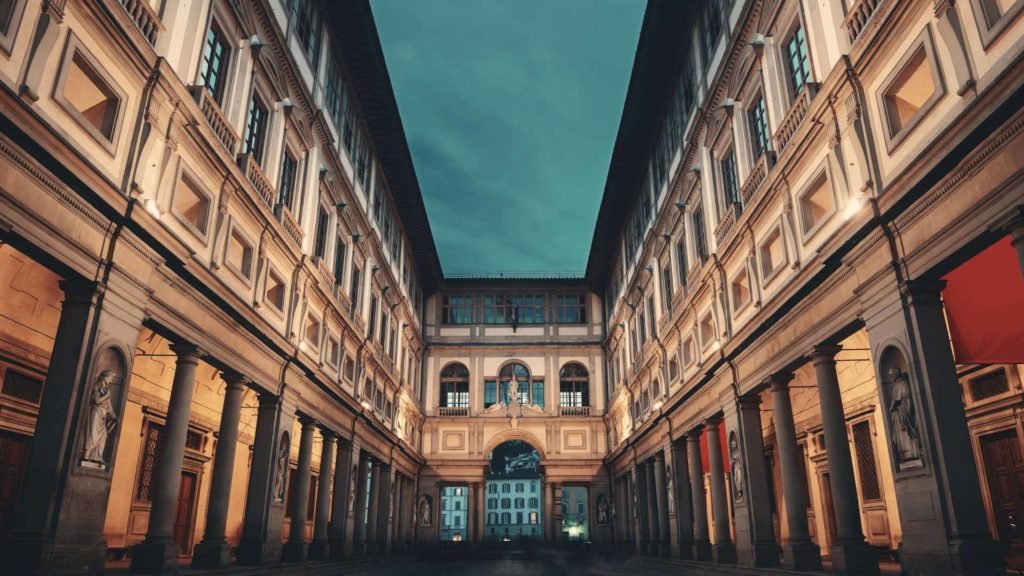
If you’re an art lover, this gallery will leave you stunned. It is truly a must-see in Florence.
Day 6- Exploring Florence further
Ponte Vecchio
Built over the Arno river, this bridge is a nice way to look at the city. With the colourful buildings in the background and the several shops along the Pontio bridge, this is a great place to spend a few hours at.
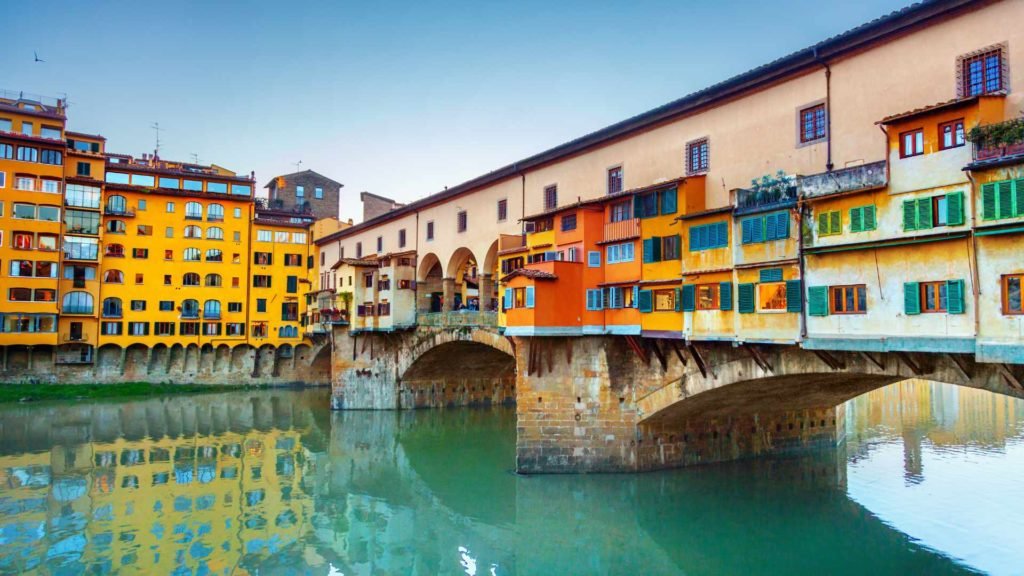
The visuals are so aesthetic, and the photography opportunities are amazing too.
Piazza Del Signoria
The Piazza Del Duomo is not the only talked about square in Florence. The Piazza Del Signoria is mostly popular for the replica of David, a sculpture created by the Italian artist Michelangelo.
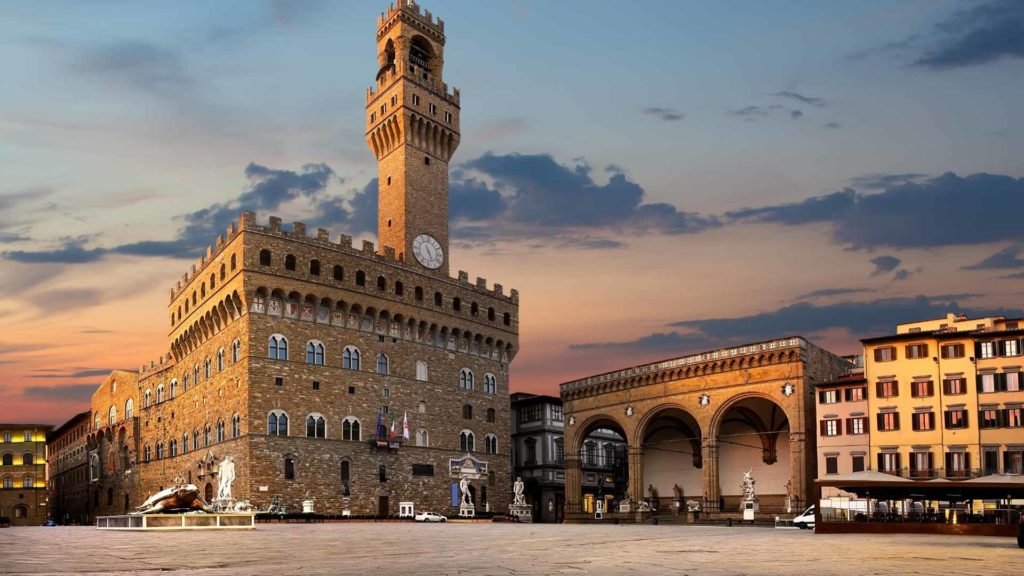
This square also holds the Fountain of Neptune and the Gucci Museum. The entrance to the Palazzio Vecchio is also here. The Piazza Del Signoria is also called the political and social heart of Florence.
Bardini Gardens
If you’re looking for some nature, the Bardini Gardens are the perfect place. You can walk through the garden and marvel at the nature and floral views. If you visit this garden during April, the purple visteria arch will have you in awe.
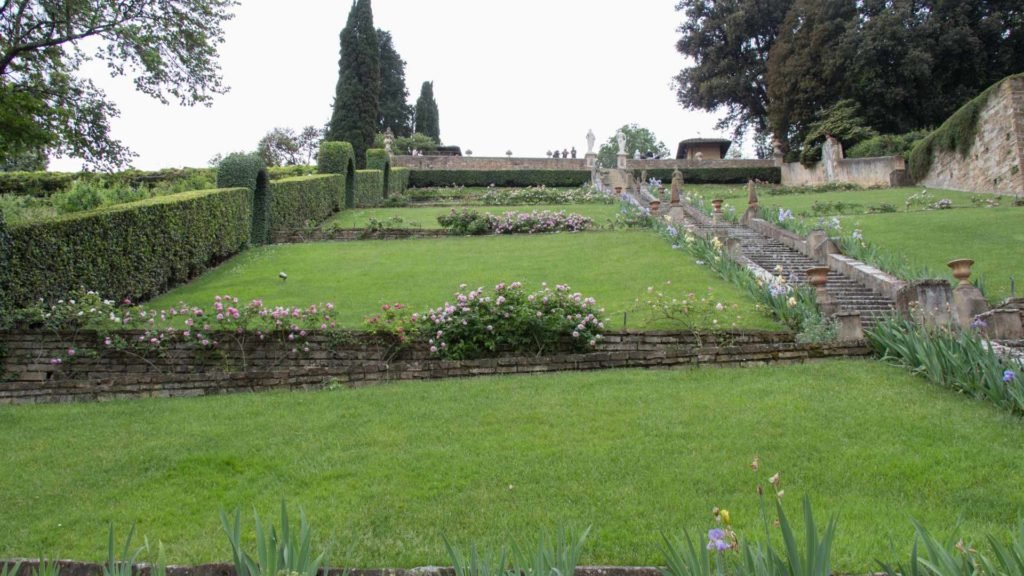
There’s also a baroque staircase, and once you’ve climbed to the top, there’s an amazing view of the city. The Bardini Gardens are a good place to get a little break from the sightseeing and bustle of the city of Florence.
Here are some detailed pieces about things to do in Florence.
Day 7- Siena
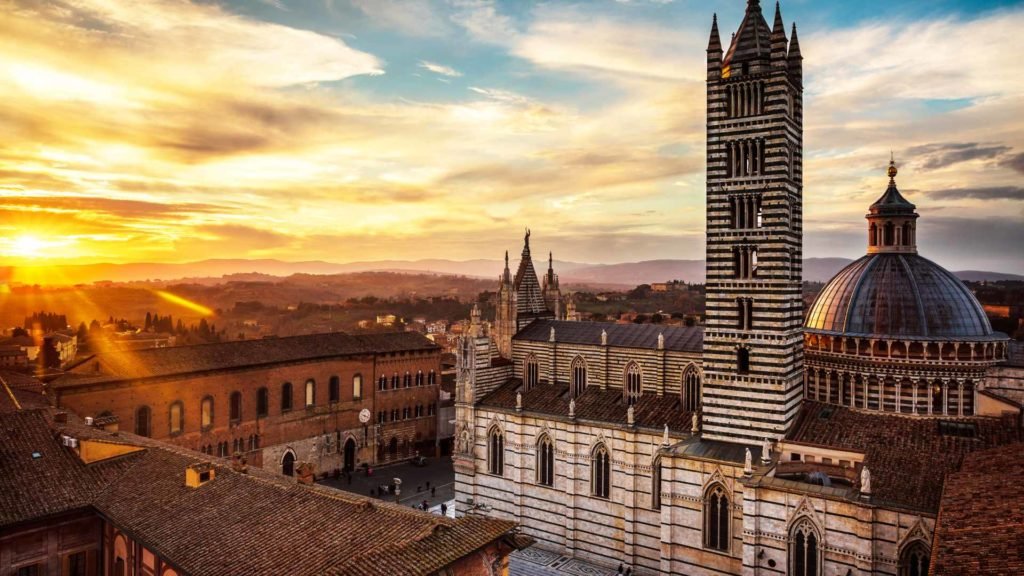
Siena is another city in central Italy and is known for its architecture and history. The historic centre here is UNESCO recognised world heritage site.
Florence to Siena
Getting from Florence to Siena is really simple. You can take a bus or a train because both ways take similar amounts of time. The journey is just about an hour and a half, and there are many bus and train options you can choose from, based on your plan. I’d recommend travelling in the morning, so you’ll have the whole day ahead of you.
The Santa Maria Assunta Cathedral
Also called the Cathedral of Siena, the interior and exterior of this cathedral is a testament to gothic architecture. It was built in the 13th century and has been iconic ever since. The exterior is made of white stone and several frescoes and marble features.
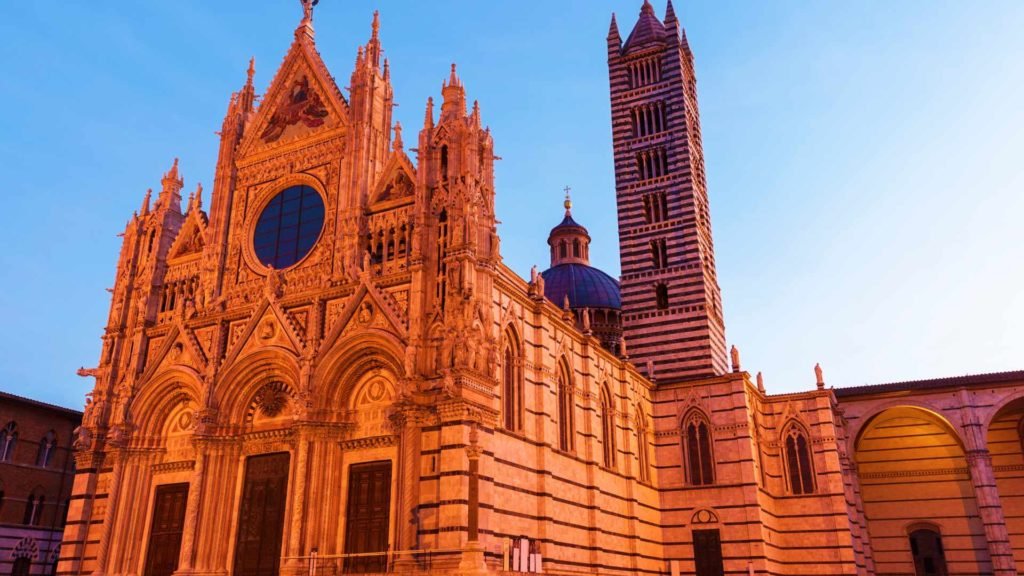
The inside of this cathedral is just as magnificent, with the golden dome, marble arches and more frescoes. The Santa Maria Assunta Cathedral is a place you must see in Siena.
Siena National Gallery
This gallery is located just south of the Piazza del Campo. It features art from the Sienese artists, prevalent between the 12th and 16th centuries. If you want a glimpse into the art and history of the city of Siena, the National Gallery is a place you should go to.
With work like “Madonna Enthroned” and “Entry into Jerusalem”, the art here is stunning.
The Torre del Mangia
An aerial view is one of the best ways to view a city, and the Torre del Mangia will give you just that. It is a 102-metre tower and is the tallest in Italy.
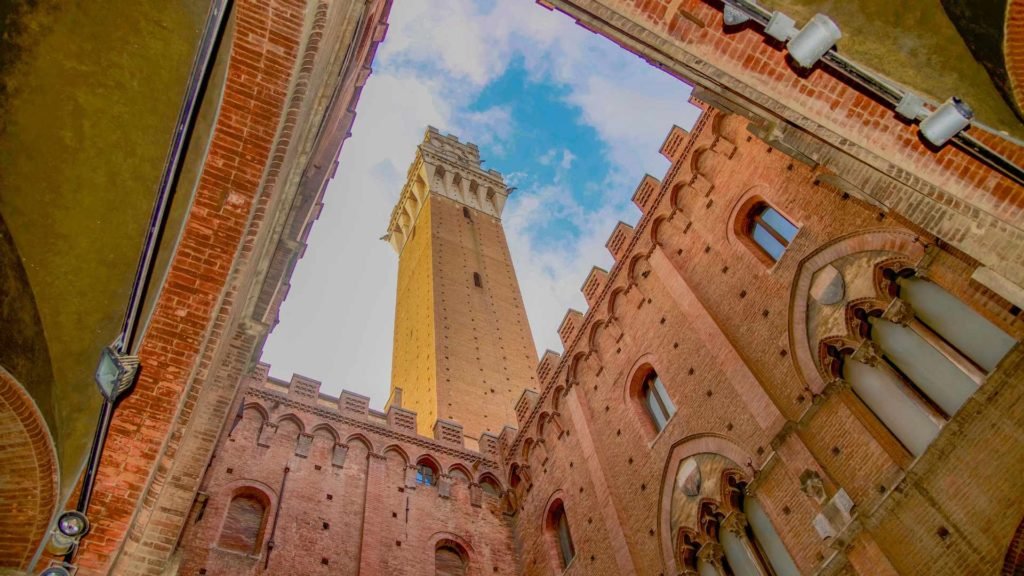
Climbing to the top might be intense, but the views are certainly worth it.
Day 8- Pisa
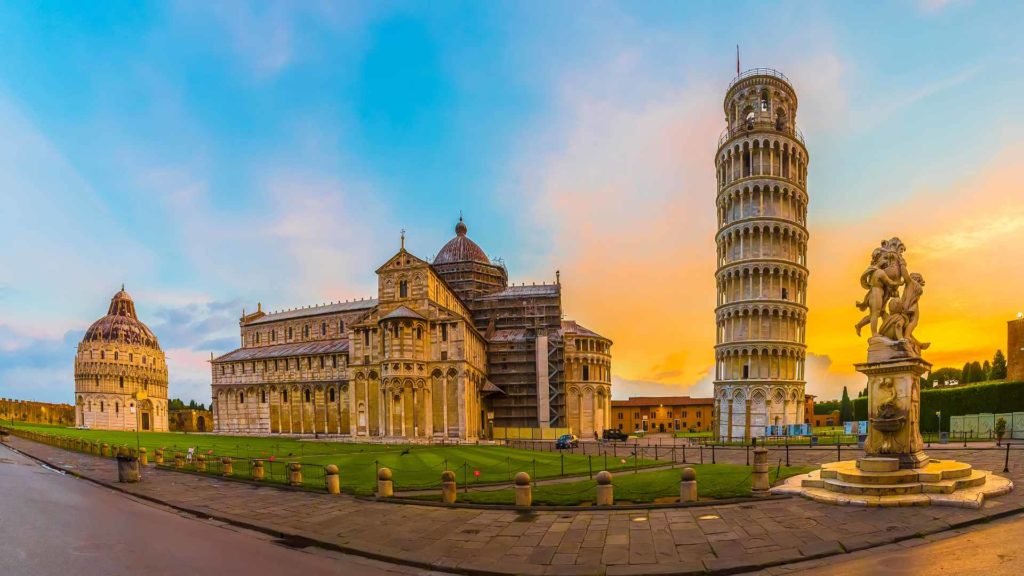
Pisa, located in the Tuscany region of Italy has some of the most wonderful examples of Italian art and architecture. It is a city you must visit on your trip to Italy.
Siena to Pisa
Train and Bus rides are recommended, because they’re cost-friendly, comfortable and also take less time. The joinery is a little over two hours long, so you won’t be exhausted after it. You can also rent a car and drive, but this is a little more expensive.
The Leaning tower of Pisa
Perhaps the most popular reason why people visit Pisa, you must not miss it while you’re in Pisa. The leaning tower of Pisa is one of the original seven wonders of the world and was constructed in the 12th century.

Whether it is taking the popular picture of you “pushing” the tower or climbing up to the top, this is a landmark you must definitely go to.
Piazza Del Miracoli
This square in Pisa is a UNESCO-recognised world heritage site. With fantastic buildings all around, there is no doubt why the name of this square translates to “Square of Miracles”.
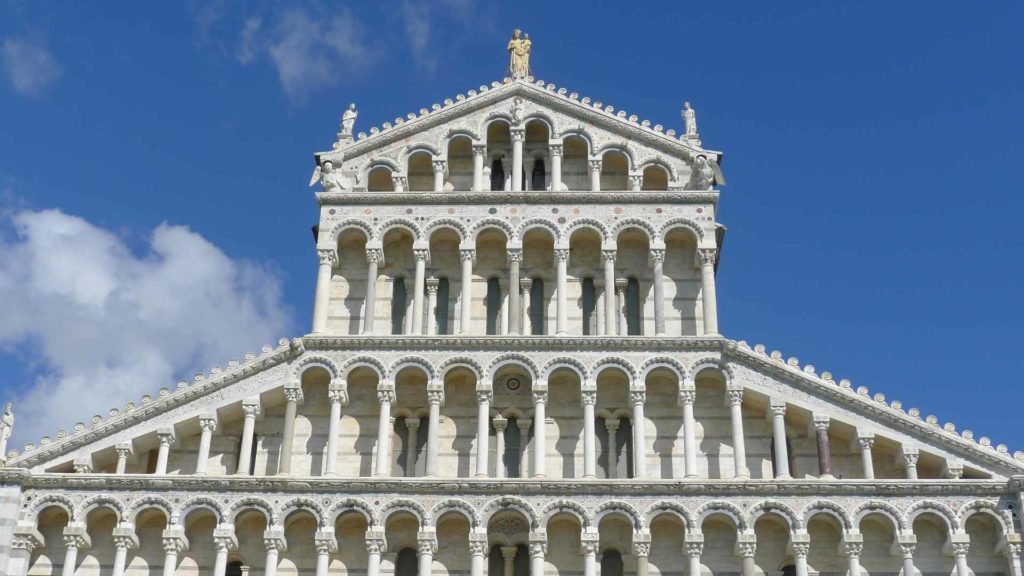
In addition to the leaning tower of Pisa, the Pisa Cathedral, the Baptistery and the Camposanto di Pisa give this square its fame and wonder.
Museo Nazionale di San Matteo
A museum is one of the best ways to understand the history and character of the city. The national museum of Pisa, the Museo Nazionale di San Matteo is a great example of this.
With paintings from the 12th century, medieval coins, pottery, sculptures and ancient manuscripts, there’s so much to learn about here. If there’s a museum you must visit to understand Pisa a little better, it is this one.
Day 9- Rome
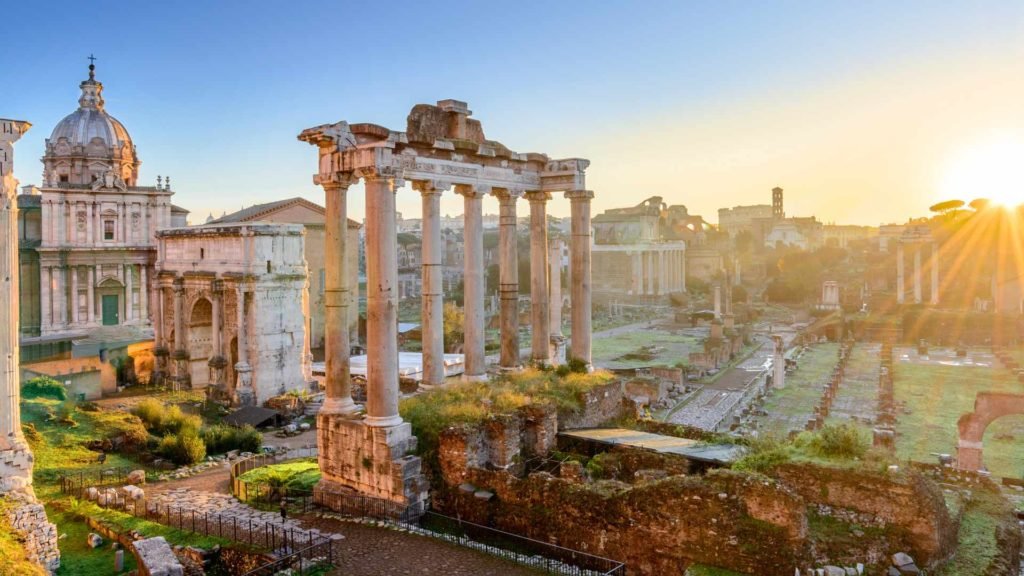
Rome is the capital of Italy, and it is also one of the most popular cities in the world. It is located in the central-western region of Italy, and there are so many things to do and see here.
Pisa to Rome
The best way to travel from Pisa to Rome is hands-down, the train. While it depends on the kind of train you take, the journey lasts between two and a half to four hours. Again, I’d say, take an easy morning to train to save some time later in the day to explore.
The Colosseum
One of the first things people want to see in Rome is the Colosseum. It is basically an amphitheatre, built sometime between 70 and 80 AD and is the most popular attraction in Rome. Roman Emperors would frequently attend gladiator tournaments and other entertainment events here at the Colosseum.
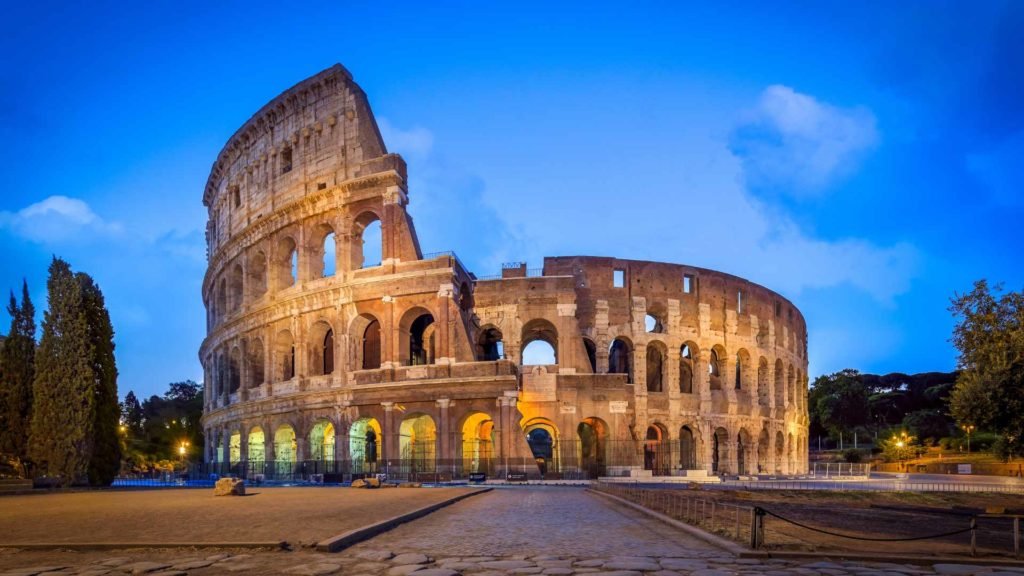
Today, it is the pride and icon of Rome and attracts 6 million tourists every year. You’ll certainly marvel at the structure and beauty of this place.
If you want to know more about the Colosseum, here is an article to check out.
The Trevi Fountain
Perhaps the most beautiful fountain in Rome, it is also the largest one in the city. The “myth of the Trevi fountain” attracts several visitors here. If you throw in one coin, you’ll come back to Rome. If you throw in two coins, you’ll fall in love with an attractive Italian.

If you throw in three coins, you marry the person you meet. Now, I’m not too sure if this myth was actually true once, but what I’m sure about, is the beauty of this fountain.
Here is a detailed article about my visit to the Trevi Fountain.
Day 10- Continue to explore Rome and the Vatican City
St Peter’s Square
Vatican City, the smallest country in the world is located in Rome. St Peter’s Square is in Vatican City and is one of the most iconic locations. The “square” is actually circular in shape and holds stages, a fountain and the St Peter’s Basilica.
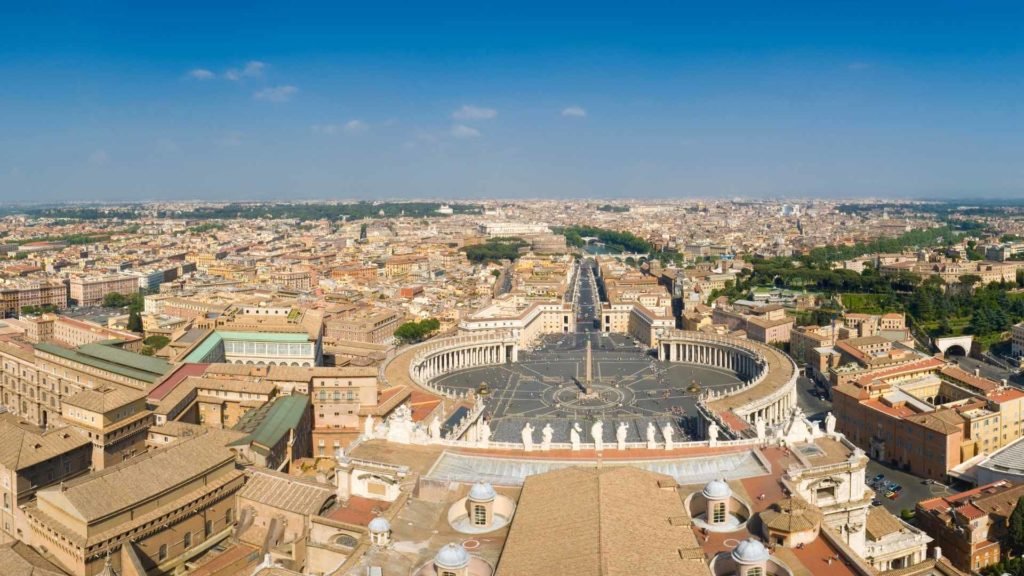
The St Peter’s Basilica is considered to be one of the holiest places for Catholics. It is adorned with statues of Jesus and the Apostles.
Sistine Chapel
While you’re in Vatican City, something you must not miss is the Sistine Chapel. It is the official residence of the Pope. The frescoes inside this chapel are world-renowned and attract so many visitors. The north and South walls have frescoes painted by Perugino, Sandro Botticelli and Domenico Ghirlandaio. The most famous frescoes are, however, on the ceiling.
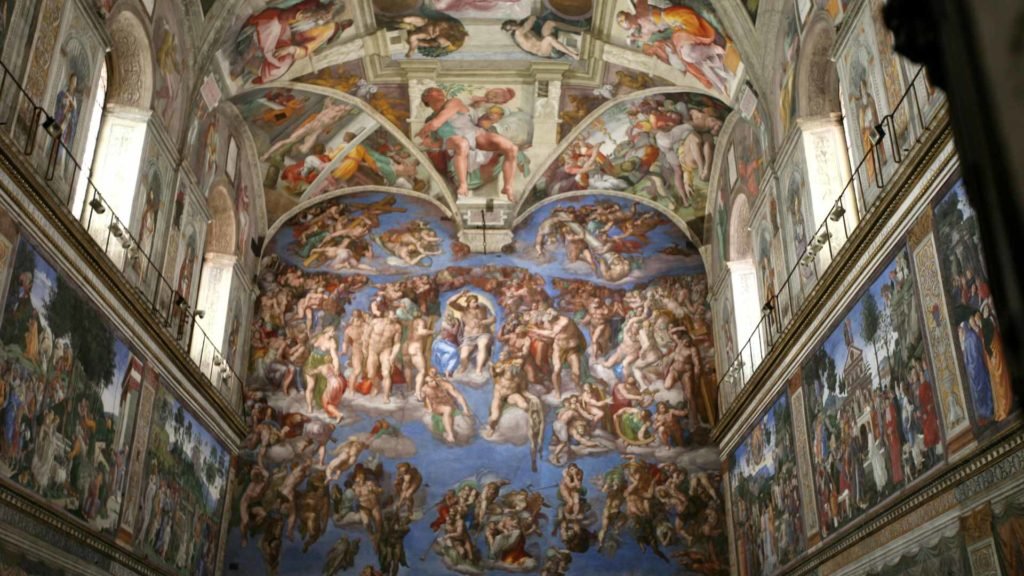
Michelangelo took four years to paint the ceiling. The frescoes basically depict incidents from the Old Testament of the Bible. You’ve heard about the “ceiling of the Sistine Chapel” in so many history books, and it’s amazing to actually see it in person.
Trastevere
The Trastevere neighbourhood in Rome is one of the best places to truly get a taste of local Roman life. When in Rome, do as the Romans do- the Trastevere is a great place to do so.
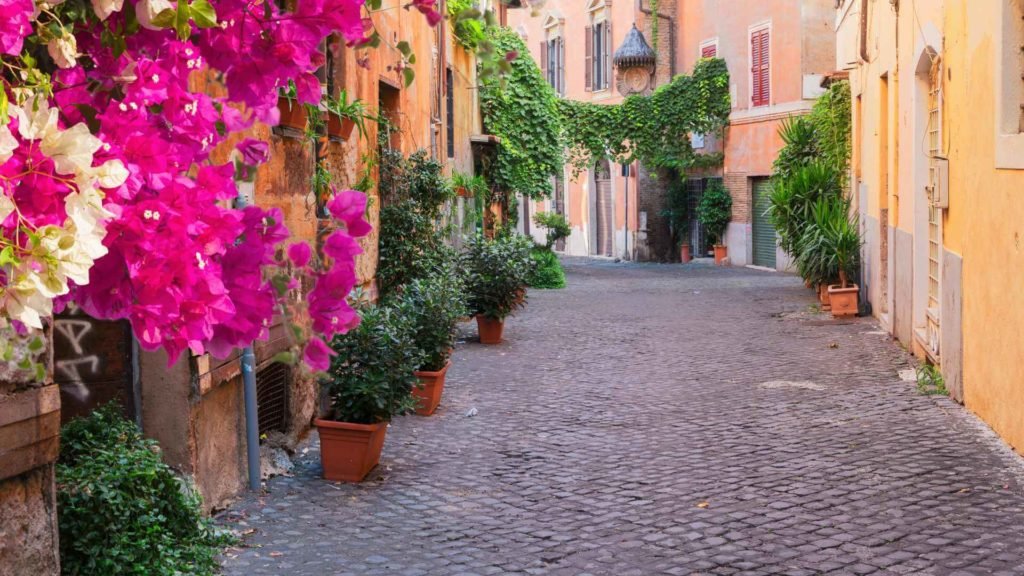
The area is full of narrow streets with cobblestone floors. With the many restaurants, pizzerias and pubs, it is a lively and happening place.
Day 11 & 12 – Amalfi & Capri Island
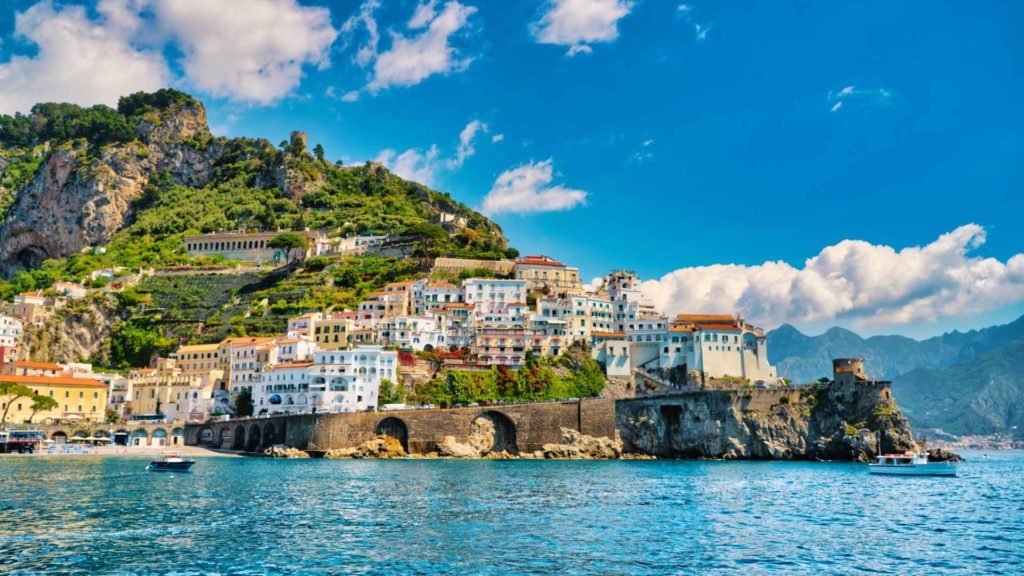
The Amalfi Coast is definitely one of the most visited places in Italy. The Amalfi Coast is located in Southern Italy and has magnificent views of the Tyrrhenian Sea and the Gulf of Salerno.
Here is a complete guide to Amalfi Coast to help you plan better.
Rome to Amalfi Coast
The distance between Rome and Amalfi Coast is about 277 kilometres. Taking the train is the most budget-friendly, as well as the fastest way to travel between these two places. A bus ride is also convenient, but it does take almost double the time of a train journey.
I’d actually recommend renting a car and driving up to the Amalfi Coast. This is more flexible and comfortable, and driving along the coast is just magical.
Amalfi town
Amalfi town is a town on the Amalfi coast giving you that true Amalfi experience. Here, you can relax on the beach, swim in the stunning blue waters and take your Instagram, pictures.
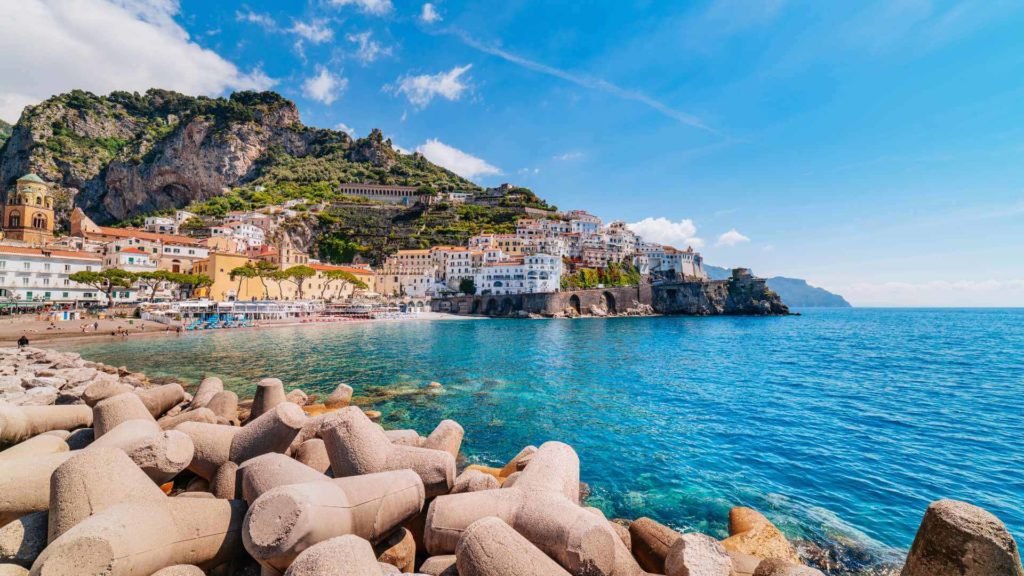
In the town itself, you can visit the Amalfi Cathedral and feast on some of the best food you’ll have.
Positano
Positano is yet another town on the Amalfi Coast and it is just as aesthetically pleasing. The best way to explore this town is by scooter. This town is also known for some of the best nightlife in Italy.
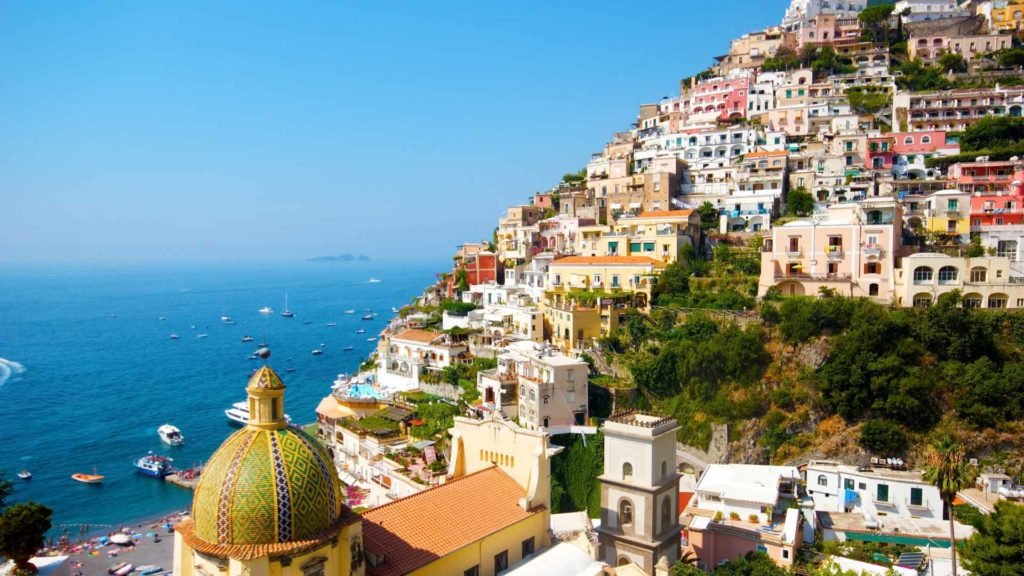
Of course, if you want to relax on a beach, soak up the sunshine and swim in the ocean, you can do that in Positano too.
Italy is a country that has a lot to see and do. Here is a list of exciting things you must check out in Italy.
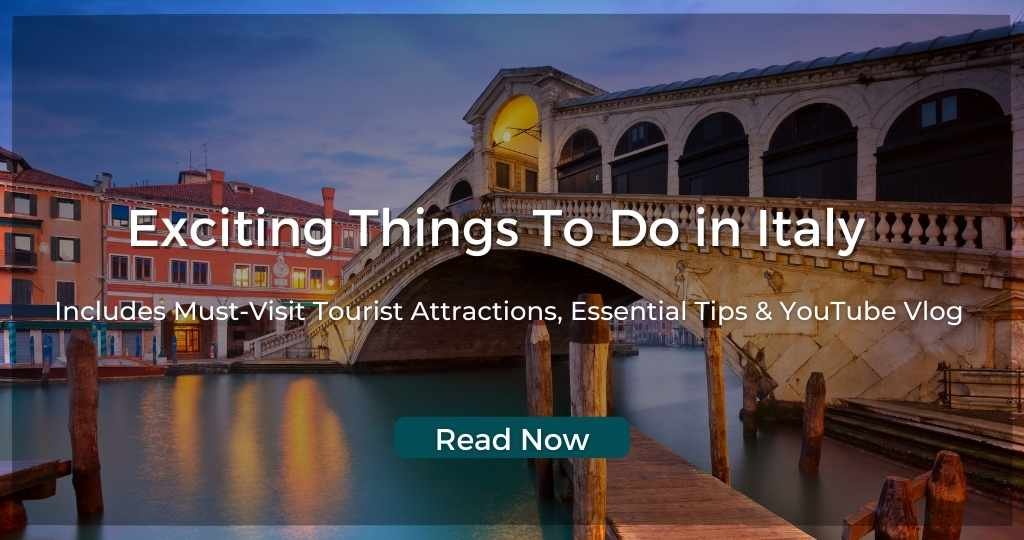
Frequently Asked Questions
What is the best city to stay in Italy?
This really depends on what you’re going for. While the most popular ones are Rome, Milan, and Florence, there are so many cities in Italy where you’ll surely have a memorable stay.
What continent is Italy located in?
Italy is located on the continent of Europe.
What is the best month to visit Italy?
The months of March, April, May, September and October are the best months to visit Italy.
How long should I stay in Italy?
Once again, this depends on what you want to do during your trip. Ideally, about 10 to 12 days would be recommended, but it could change based on your trip goals.
Is Italy safe for tourists?
Like most European counties, Italy is a safe place. While you might want to be careful with the pickpocketing rates, violent crime is rarely reported here.
Is Italy expensive to travel to?
Several counties in Europe are on the higher end of the spectrum when it comes to budgets, but Italy doesn’t fall that high on this spectrum While you can defiantly splurge on your trip to Italy, it can also be made a budget-friendly trip.
Download Free Italy’s Itinerary PDF
Conclusion
Italy is one of those places that is on almost everyone’s bucket list, and it is clear why. A trip to Italy is one you’ll remember for a lifetime, and there’s something for everyone here.
Now, this itinerary contains suggestions of some of the most popular places you should visit in the regions of Italy.
Of course, you don’t have to follow it completely, but I am sure it has helped you in planning your trip. There are so many things to do in every single region or city in Italy, and if I was to list out each of them, this piece would be never-ending. Nevertheless, I wish you a safe, fun and mumble trip.
Did this itinerary make things simpler for you? When are you planning on going to Italy? I’d love to chat about this in the comments below.
Until then, happy travelling and I’ll see you soon!




